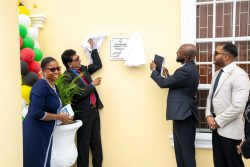Something strange happened in Dominica last weekend.
For each of the last three days of a Test match the West Indies had absolutely no hope of winning and every chance of losing, Windsor Park, the impressive modern stadium in the capital, Roseau, increasingly filled to near its 10,000 capacity.
On the Sunday, queues formed outside from early morning, waiting to support their team’s effort to hold off the superior Indians.
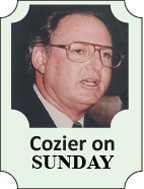 By the time lunch came around there was hardly a seat to be had in the stands, all named in honour of eminent Dominica players. On the eastern side the open grass bank was also well populated.
By the time lunch came around there was hardly a seat to be had in the stands, all named in honour of eminent Dominica players. On the eastern side the open grass bank was also well populated.
They knew they wouldn’t be seeing a glut of fours and sixes and a bunch of power plays. This, after all, wasn’t a One-Day International or a Twenty20 knockabout. These were the final periods of Test match, a seemingly endangered species.
So what encouraged Dominicans to buck the recent global trend, not least in the Caribbean, and turn out in such numbers for such a match?
It was, to be sure, an historic occasion, the first Test ever staged on the island. Yet there had been no such enthusiasm for their inaugural Tests in St Vincent, St Lucia, St Kitts and Grenada. Even the long established venues of Barbados, Guyana, Trinidad and Jamaica now attract only the game’s diehards.
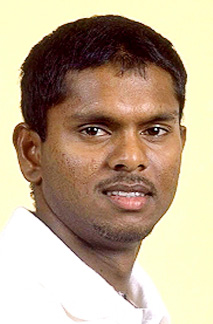
When entrance was free at Kensington Oval for the last day of the second Test against India, no more than a few thousand turned out at the ground that hosted the first Test in the West Indies in 1930 but now has to depend on English tourists, or a Rihanna show, to fill it.
For the second of two Tests against Pakistan at Warner Park in St Kitts, there was a mere sprinkling of spectators, even though West Indies had won the first match of the series.
It is an attitude fuelled mainly by the continuing failures of the West Indies team and the attendant, irritating squabbling between players and board. For the 2011 season, the cricket had become little more than a sideshow alongside the spicy features starring Chris Gayle, Shivnarine Chanderpaul, Ernest Hilaire, Dinanath Ramnarine and their accompanying casts.
It was heartening, therefore, to be in Roseau and realise that it was the spirit shown by the West Indies team on the third day that was the catalyst for the Dominican fervour.
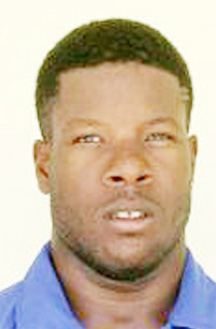
They understood, like everyone else, that this was a relatively weak team without a couple of its most solid batsmen. They were aware of the widespread pressure placed on the captain, Darren Sammy, a fellow Windward Islander.
But, whatever else, they appreciated that the 11 on the field were representing the West Indies and warranted their support.
Their fervour was tested over the first two, rain-shortened days when the batting again faltered and limped to a total of 204. It was even more so, as India set out at eight without loss on the third morning in the sunshine that would last for the remainder of the contest.
The West Indies suffered an immediate, crippling setback as Ravi Rampaul was stricken by a stomach virus and admitted to hospital. He would not bowl again in the first innings. It meant the West Indies would not only be without their season’s leading wicket-taker but, given their unbalanced selection, reduced to three practicing bowlers.
It was a daunting prospect. A powerful, uncompromising Indian response seemed certain, especially when Darren Sammy summoned debutant Kirk Edwards to bowl for the first time in any first-class match and called on Chanderpaul for his first spell in any serious cricket in four years.
What followed would brighten what might well have turned into the sombre mood West Indies cricket knows only too well. It was triggered by a combination of the team’s stirring spirit and the vociferous encouragement of the Dominican crowds (there was hardly a tourist to be seen anywhere).
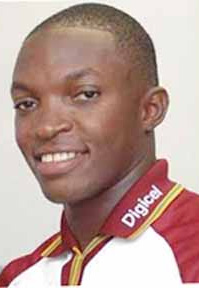
In spite of Rampaul’s absence, India were kept to 300 runs for six from 94 overs on that third day. Davendra Bishoo, even if not at his best, kept his leg-spin going for 35 overs. Sammy carried on for 23, Fidel Edwards for 21.
By the end, CJ Clark had earned his pay and more as physiotherapist/trainer. Sammy said afterwards he was hurting but he couldn’t tell where.
Still without Rampaul, the bowlers wrapped up India’s innings next morning for 347. That was still a deficit of 143 and once the openers and Darren Bravo fell at 40 for three, a four-day defeat loomed.
By this time, Windsor Park was filling. Chanderpaul—now the most capped West Indies Test cricketer and, for 17 years, the doughtiest of fighters—was still in. It was the kind of desperate situation he relishes.
But who would stay with him?
On arrival in the middle, he met Kirk Edwards, in his first Test and a victim of a questionable decision in the first innings three days earlier. To follow were Marlon Samuels, wicket-keeper Carlton Baugh, Sammy and the other bowlers.
To all but the thousands at Windsor Park, among them the two men in the middle, it was beyond reason that the West Indies could wriggle out of such a tight squeeze for the second time. Yet teams in all sports understand the stimulating value of a vocal and supportive home crowd.
It is an advantage the West Indies have seldom enjoyed of late.
This time, the belief of the Dominicans (and there were men, women, boys, girls, children, Toute Bagai) was transferred, seemingly by osmosis, from the stands to the middle. Every run was cheered, every landmark loudly celebrated.
As India lost their focus against such a background, making the usual mistake of believing their victory was only a matter of time, Kirk Edwards advanced to his historic hundred, adding 161 for the fourth wicket with his reliable left-handed partner.
But the twists and turns of this fascinating match were not yet over. Three wickets late on the fourth afternoon and two more early on the final day rendered the West Indies once more vulnerable. Yet again, there would be resistance, still from Chanderpaul but also from an unlikely partner, fast bowler Fidel Edwards.
Yet again, the energy from the stands was a factor. The pair kept the frustrated Indians in the field for 37 overs, Fidel Edwards occupying 106 balls for his highest Test score while adding 65 with Chanderpaul who was unbeaten on 116 (from 343 balls), his 23rd Test hundred, when the last wicket fell.
India’s winning target, 180 from 47 overs, appeared well within their reach but so repeatedly foiled by feisty opponents and with the series secure, they no longer had the will to give it a go.
The team ranked number one on the ICC’s Test standings settled for a draw, a decision that brought the wrath of the Indian press and former players on the head of captain MS Dhoni.
For the West Indies, the result meant much more. It was evidence of what can be achieved with the public’s wholehearted backing, rather than the pessimism that so regularly envelops the team.








